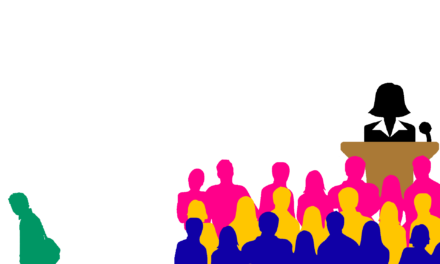Since last March, the U.S. has struggled to get Americans to take the COVID-19 pandemic seriously. The slew of public health misinformation from former President Donald Trump has convinced many Americans that the virus is no more serious than an annual flu outbreak, causing only mild, manageable symptoms. Americans cling to misleading COVID-19 survival rate statistics, assuming that they’ll get the virus, recover in a week or two and be immune forever. Many also believe that a vaccine will be an immediate cure for the pandemic, refusing to acknowledge the gradual process of herd immunity.
Ultimately, the country’s failure to curb this pandemic stems from American selfishness: our failure to understand that our actions can harm those around us even if we escape unscathed. To control COVID-19 outbreaks nationally, Americans must continue to wear personal protective equipment, promote prosocial behaviors within their communities and encourage government officials to enforce socially distant policies.
Many Americans employ lofty rhetoric to justify their mask-wearing aversion. The Brookings Institution found that 40% of Americans claim that, as U.S. residents, they have the right to forgo wearing a mask in public. Additionally, 24% of Americans state that wearing masks is too uncomfortable. These largely individualistic excuses fail to account for the real reason why we must wear masks in public: to protect others from COVID-19 and mitigate the virus’ spread. When evaluating public health guidelines from a population-based lens, it’s important to remember that our individual actions can help account for discrepancies in mask-wearing and social distancing nationwide.
The Swiss Cheese model accurately outlines the gradual process of curbing viral spread. Coined by Professor Emeritus at the University of Manchester James Reason, the holes in swiss cheese symbolize the need for several layers of protection. For example, wearing a mask is only one layer. Some masks are less effective than others if they do not have a filter, and are continuously used after they should have been disposed of, washed or sanitized properly. Additionally, no mask is 100% effective. As such, we need more preventative measures to account for each layer’s “holes” and maximize our chances to put an end to this pandemic.
Moreover, the U.S. government must restructure its strategies to reduce COVID-19 spread nationwide, emphasizing safe behaviors over gatherings and improper mask-wearing. Americans must pressure their government officials to structure COVID-19 messaging to emphasize positive behaviors instead of drawing attention to unsafe gatherings in our respective communities.
According to Cristina Bicchieri, the director of the Center for Social Norms and Behavioral Dynamics at the University of Pennsylvania, the tactics government officials use to encourage COVID-safe behaviors might actually be reinforcing unsafe actions. When government officials publicly blame COVID-19 outbreaks on house parties instead of reiterating proper behaviors, they normalize non-socially distant activities. Instead, governments tailor their responses to their audiences and appeal to authorities whom the public trusts.
In a recent study, Biccheri found that when people expected many of their fellow citizens to practice and approve of socially distancing and staying at home, they were 55% more likely to do the same. Researchers also suggested that ad campaigns illustrating whether the majority of individuals were following COVID-19 guidelines, aside from just wearing a mask, can meaningfully improve compliance among a population. David Rand, the director of the Human Cooperation Laboratory at the Massachusetts Institute of Technology, stressed the importance of making “it so that other people will know if you’re practicing COVID-safe behaviors” or not. Ultimately, to prevent further outbreaks, we must show each other that we take COVID-19 guidelines seriously. We must use our resources to encourage government officials to completely restructure their COVID-19 messaging.
As more Americans receive vaccines in the coming months, we cannot forgo social distancing and mask-wearing guidelines. No one line of protection will help us return to normal, and that includes vaccines. We must continue to account for the holes or gaps that arise when implementing these guidelines by engaging in preventative measures whenever possible. Moreover, the government must also help Americans understand the importance of prosocial behaviors: engaging in actions that benefit both our communities and ourselves. If the government can’t influence Americans to be cautious, the responsibility ultimately falls in our hands to end this pandemic. In documenting our COVID-safe actions extensively and showing others that the majority of Americans are doing the right thing, we can become safer and healthier moving forward, ending the COVID-19 era once and for all.
Sara Khan (23C) is from Fairfax, Virginia.
Sara Khan (23C) is from Fairfax, Virginia, double majoring in neuroscience and behavioral biology and English. In her free time, she enjoys reading, watching Netflix shows, playing sports and listening to music. Contact Khan at sara.a.khan@emory.edu.





